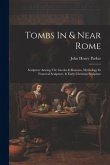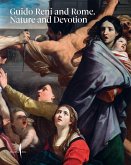The classic Guide to Baroque Rome was called ‘the greatest architectural guidebook ever written’. Over 300 entries discuss the churches’ history, design, construction and significant features, including paintings. Anthony Blunt’s Guide to Baroque Rome, the fruit of a lifetime’s work, was a pathbreaking book when it was originally published, and was called ‘the greatest architectural guidebook ever written’. Each of the over 300 entries discusses in detail the history of the church, its design and construction, as well as its significant features and decoration (including paintings). Much new information has been amassed since the original edition appeared and in this revised edition care has been taken to make this material as accessible as possible, whether it is an appraisal of the patronage history of a particular chapel, a new attribution, or the full significance of a fresco cycle. Full references and indexes are provided in a clearer format than hitherto. Dr Michael Erwee worked on this new edition for fifteen years. Editorial support was provided by Lisa Adams, Sebastian Wormell and Dany McNutt of the Courtauld Institute.
Bitte wählen Sie Ihr Anliegen aus.
Rechnungen
Retourenschein anfordern
Bestellstatus
Storno








